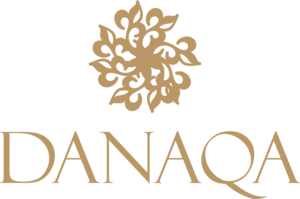March 8th is International Women's Day and we spoke to Danaqa CEO David Thomas about his thoughts and male perspective on this year's campaign theme #PledgeforParity.
1. What is the most valuable way in your experience, to help women and girls achieve their ambitions?
This is a difficult question to answer - for me there are two sides to it, one on a very individual level and the second more general. The general answer to this question is to provide opportunities. This can mean lots of different things, and for me goes beyond the idea of providing a level playing field. That idea is passive, I think the most valuable way that we can help women and girls achieve their ambitions is more active than that. In whatever it is that you do you should think actively about providing opportunities to women and girls. This can be on an employment basis, or for us on trade, or can be on an education level. To give a funny example, there is a social media movement about “All Male Panels”. The idea being that so often at workshops, meetings, events, on TV shows and on the news a panel is put together and all the participants are men. There are two ways of dealing with this. Firstly, the passive way is to say “we just looked for the best people, without prejudice to be on the panel, and they happen to all be men”. The active way is to say “we cannot have one perspective on this issue, we need a range and we need to make sure that there are women on this panel”. I believe that we should be actively providing opportunities to women.
Secondly, on an individual level I think that confidence is a large factor in helping women achieve ambitions. There is a gender lens that we see the world in, and this impacts lots of things and impacts girls as they grow up in their confidence to do things. Everytime I see this gender lens I think of the negative impact it has on the confidence of my daughter. At Christmas she wanted a remote controlled car, but said she shouldn’t because only boys play with them. I asked her why she thought this and she said it was because of the adverts she saw on TV. She is 4. The effect of these things on her confidence I think is real, and this will change her ambitions.
2. What conversations do we need to be having with men to close gender gaps and create more inclusive workplaces?
I genuinely think that workplace dynamics need to be dealt with starting with a more societal change. The remaining narratives of things “boys do and girls do” changes so much in how we see everything. Women make dinner, men do DIY, blah blah. I still hear constantly of the idea there is a primal male instinct to be the breadwinner -surely this is an everyone instinct. All of those elements feed into the way workplaces run. I think there needs to be a complete rethink on all of this within households. We should have more conversations about roles within the household, and why we do things. I genuinely think that if the answer to a questions is “because that is the way it has always been” we should look to do something different. I think if households change their thinking on the everyday issues of things like doing the school run, the shopping, the cooking, looking after sick children, parents etc then workplaces will soon follow.
Within the workplace specifically I notice things in friends works that concern me. The types of traditional networking events that happen at a corporate level - Golf events, boxes at football and rugby games, that sort of thing - are still prevalent. I want to know if these are important? Can the organisers of these see the gender barrier of them? If they are important, shouldn’t the “event” be more inclusive and if not then why bother?
3. How can we increase women's leadership, especially in developing countries?
I am not sure that there are too many actions that are unique to developing countries beyond making sure access to education is genuinely equal. Whilst not perfect, a lot of developing countries have pretty good track records for women in leadership roles when compared to countries we think of as being “developed”. Not perfect, but not bad. The big one is that women’s education levels are on the whole lower, this cannot and should not be the case.

















